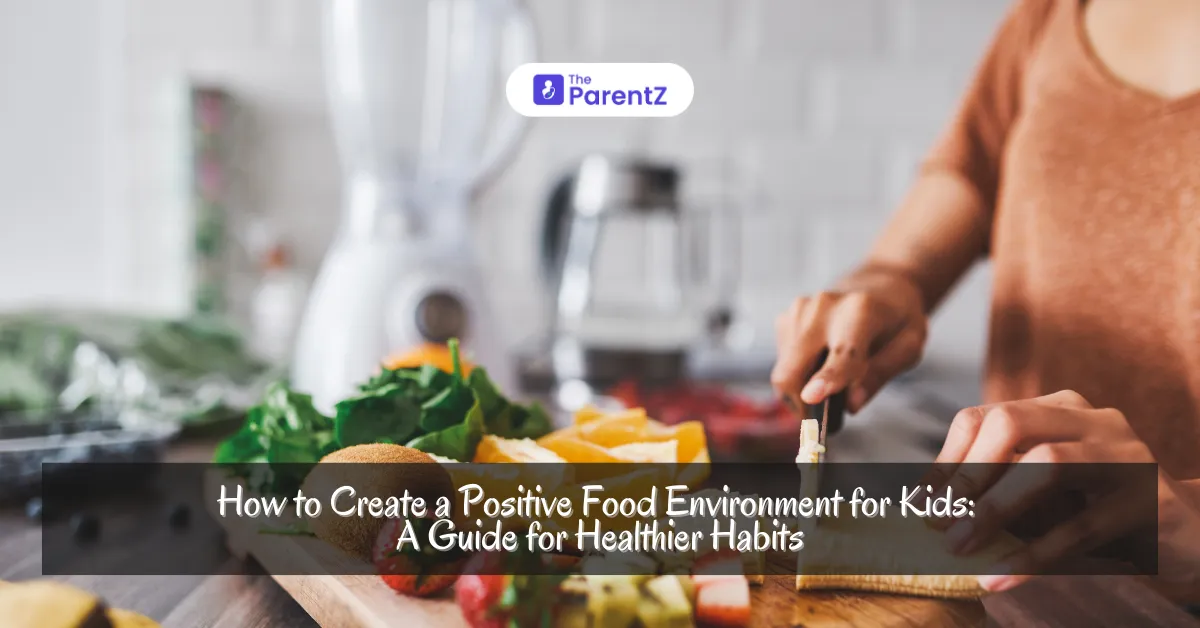Creating a positive food environment for kids is key to shaping their lifelong relationship with food. A supportive and encouraging approach can help children develop healthy eating habits, minimize food-related stress, and build a balanced diet. Parents play a crucial role in guiding their children toward nutritious choices while fostering a positive atmosphere around mealtimes. This article provides practical tips on how to create an engaging and stress-free food environment for kids that promotes health, happiness, and balance.
Practical tips on how to create an engaging and stress-free food environment for kids
1. Be a Role Model
Children learn by observing the behavior of adults around them. If you want your child to develop healthy eating habits, it’s important to model those behaviors yourself. Eat a variety of healthy foods, avoid skipping meals, and maintain a positive attitude toward food. When kids see their parents enjoying fruits, vegetables, and other nutritious options, they are more likely to adopt similar habits.
2. Create a Structured Mealtime Routine
A consistent mealtime routine helps kids feel secure and reduces anxiety around food. Set regular times for meals and snacks so that children know when to expect food. Avoid distractions such as screens during mealtimes, as this allows kids to focus on their food and develop mindful eating habits. Encourage them to listen to their bodies and recognize hunger and fullness cues.
3. Offer a Variety of Nutritious Foods
Exposure to a wide range of foods is important in developing a child’s palate and reducing picky eating. Regularly introduce new vegetables, fruits, whole grains, and proteins. Make it fun by allowing kids to help choose or prepare meals, which gives them a sense of ownership and excitement about trying new foods. Keep mealtimes positive, even if they refuse certain foods at first—it may take multiple exposures before a child accepts a new food.
4. Avoid Using Food as a Reward or Punishment
Linking food with emotions can lead to unhealthy eating patterns later in life. Avoid rewarding good behavior with sweets or withholding food as punishment. Instead, offer non-food rewards like extra playtime or praise. Focus on creating a neutral, calm atmosphere around food, where eating is simply part of a healthy lifestyle rather than a means to control behavior.
5. Encourage Involvement in Meal Planning and Cooking
Children are more likely to eat foods they’ve helped prepare. Involve them in meal planning, grocery shopping, and cooking. This not only teaches them valuable skills but also increases their curiosity and excitement about healthy foods. Let them pick vegetables or suggest ideas for meals, which can foster a positive relationship with food.
6. Make Meals Fun and Interactive
Presentation matters, especially for younger kids. You can make mealtimes more enjoyable by arranging food in colorful, playful ways, or by creating themed meals. Encourage your child to explore different textures, flavors, and colors in their meals. By making eating fun, children are more likely to associate mealtimes with positivity.
Conclusion
Building a positive food environment for kids is about creating balance, structure, and joy around eating. Through role modeling, offering variety, maintaining mealtime routines, and fostering involvement, you can set the foundation for healthy lifelong habits. Remember that patience is key, and every child develops their relationship with food at their own pace. By providing support and encouragement, you’re helping them grow into confident, mindful eaters.






